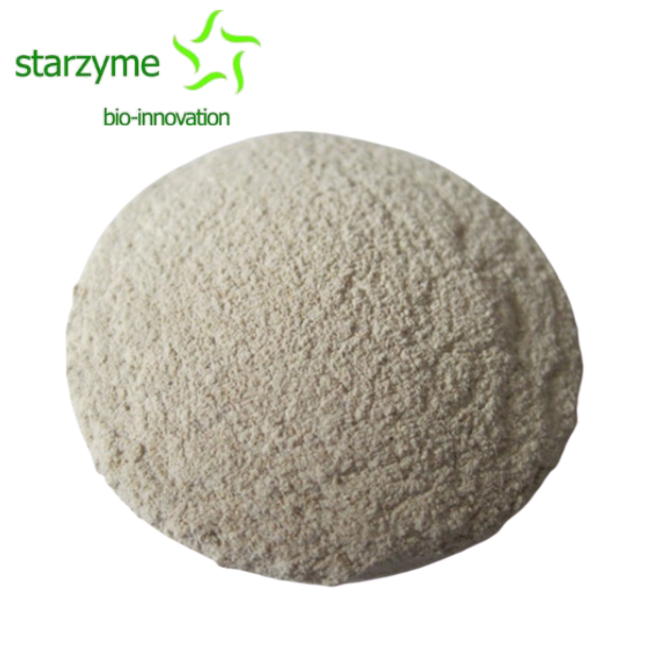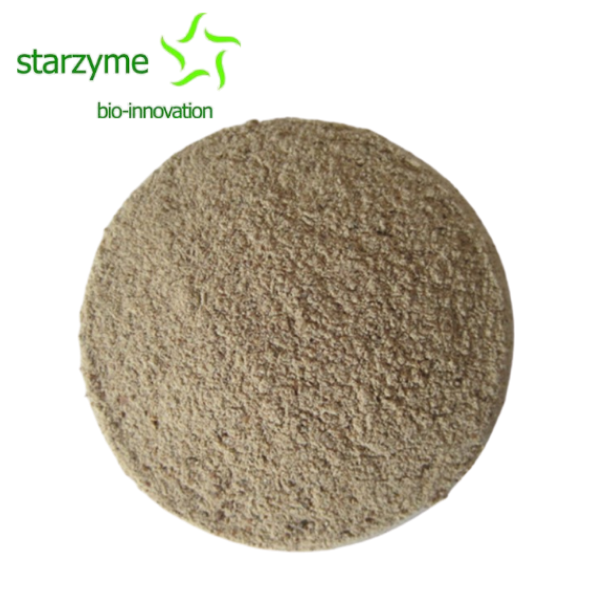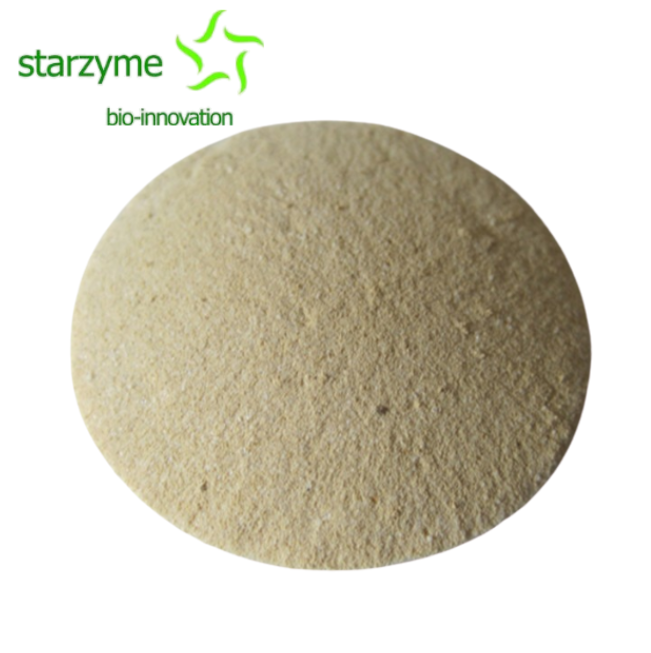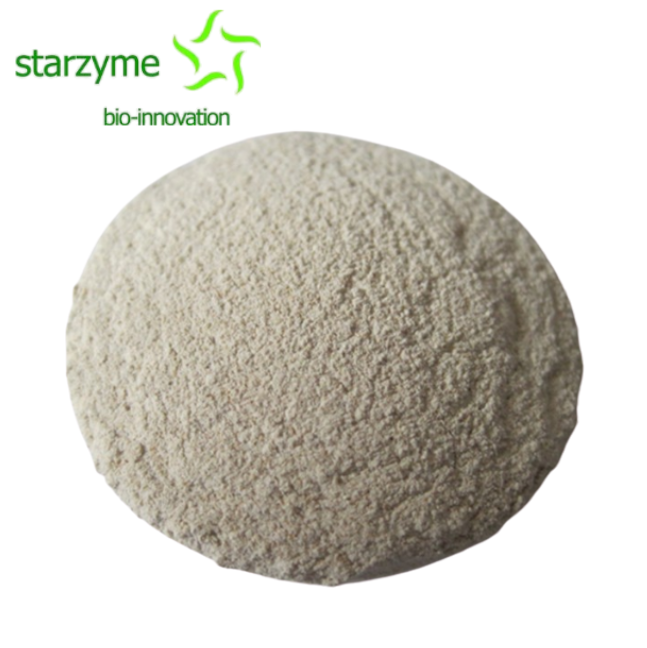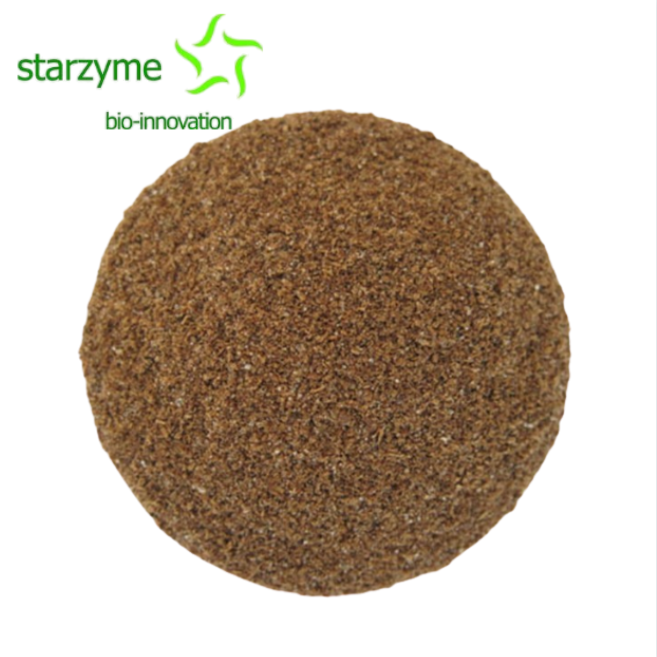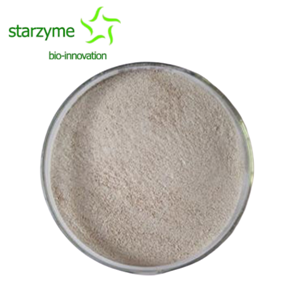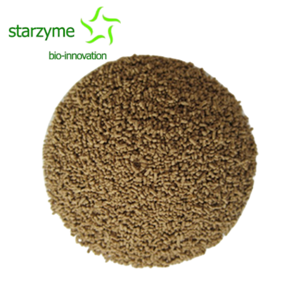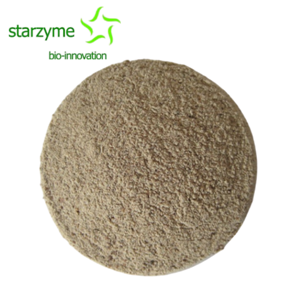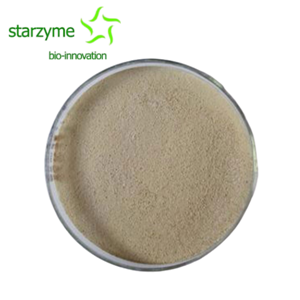Xylanase Enzyme

- Starzyme
- China LiaoNing
- Within Two weeks afterreceivedthe order
- 150 Tons Permonth
1. Contains a high proportion of endonuclease, which can quickly cut the β-1,4 glycosidic bond of xylan. Also acts on soluble xylan
And insoluble xylan, high hydrolysis efficiency.
2. The wide range of PH adaptability can reach 3.5-8.5. The xylanse can effectively play a role in various animals and different digestive tract sites.
3. The xylanse has a wide temperature adaptability range and good temperature resistance. The active retention rate of granulation enzyme at 85℃ is greater than 90%.
4. Excellent product stability.
The xylanse is prepared by deep fermentation of fungus. Xylanase hydrolyzes 1,4- glucosidic bond of xylan to produce xylooligosaccharide, xylobiose, xylotriose, and a small amount of arabinose.
Features:
1. Appearance: pale white powder with less than 8% of water content.
2. Activity: 200,000 U/g
3. Temperature: 35-55 ⁰C with optimal temperature of 50 ⁰C
4. pH: 3.5-7.0
Definition of the unit of the enzyme activity: One unit (U) is defined as the amount of enzyme needed to hydrolyze oat xylan (5 mg/ml) to release 1 μmol of reducing sugar based on xylose measured as the absorbance value in DNS chromogenic reaction in acetic acid-sodium acetate buffer (0.1 M, pH 5.5) at 37 ⁰C in 1 min (total reaction time is 30 min) (GB/T23874-2009).
Applications:
1. In beer brewing, xylanase and beta glucanase can work synergistically to solve the problem of filter clogging caused by xylan and beta glucan.
2. In bread production, xylanase can improve the quality of bread by decomposing arabinoxylan.
3. In papermaking, xylanase can be used for dissolving and bleaching of the pulp.
4. In feed industry, xylanase can increase the digestibility of wheat, barley, wheat bran, wheat middling, and Distillers Dried Grains with Solubles (DDGS) by decomposing non-starch polysaccharides (NSP).
(1) For soybean meal based diets of broilers and chicklings: 4-10 g/ton.
(2) For soybean meal based diets of laying chickens, piglets, growing pigs, ruminants, and aquatic animals: 5-6 g/ton.
(3) For soybean meal based diets of ducks and geese: 6-10 g/ton.
(4) For miscellaneous meal based diets of broilers and chicklings: 5-6 g/ton.
(5) For miscellaneous meal based diets of laying chickens, piglets, growing pigs, ruminants, and aquatic animals: 6-10 g/ton.
(6) For miscellaneous meal based diets of ducks and geese: 5-10 g/ton.
Specification: 20 kg/bag
Storage:
Store in dry and cool (below 25 ⁰C) area with ventilation. During transportation, avoid direct exposure to strong sunlight, rain and moisture. The enzymes will lose activity at high temperature or under strong sunlight. The enzyme activity can be maintained up to 90% for 6 months when stored at room temperature.

Analysis on the current pain points of the industry
1. False mark of enzyme activity
The product is marked with 100,000 enzyme activities, and the actual enzyme activity is 60,000, resulting in incomplete hydrolysis and indirectly increasing the cost of enzymes.
2. Product is unstable
Lack of enzyme protection technology and quality control, unstable enzyme activity, and differences in product specifications for each batch, resulting in product quality fluctuations.
3. Long production cycle
No enzymatic hydrolysis experience and enzyme compounding technology increase labor cost and R&D cycle, which indirectly affects the production schedule.
For us, our major is to solve these pain points
1. The enzyme activity can be customized, providing different enzyme activity products and solutions
2. Stable enzyme activity, unique enzyme activity protection technology to reduce fluctuations in production quality
3. Enzyme activity is not false, strict quality control links, third-party testing to reduce enzyme costs
Quality control strength
6 key control point inspections, escorting the whole process of quality, using extraction, membrane separation, vacuum freeze-drying, spray drying and enzyme activity protection technologies to produce products that fully meet the requirements of global customers.
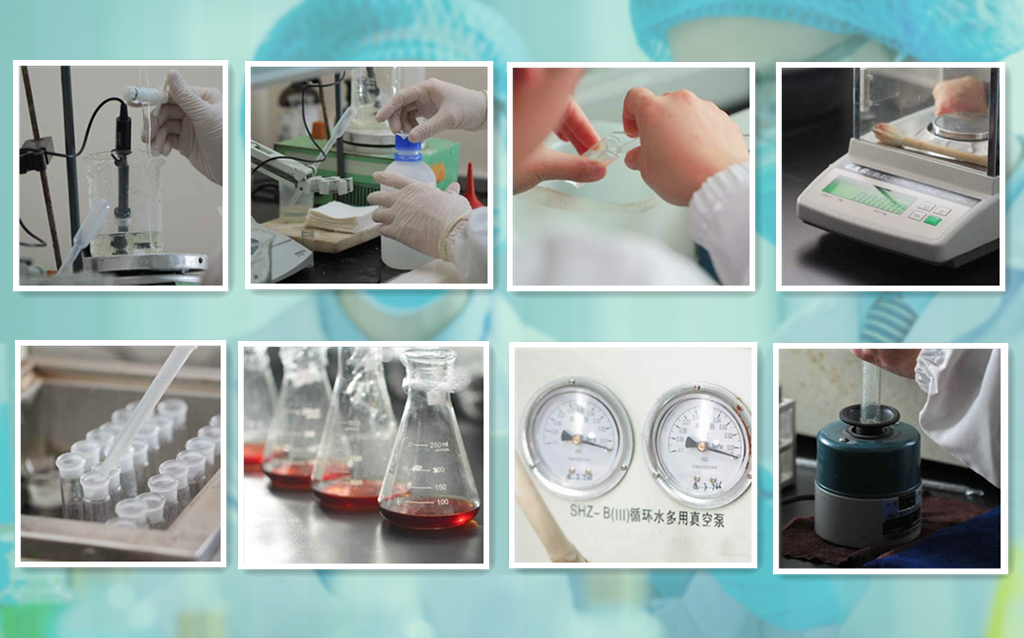
Production capacity
Eight automatic primary fermentation cylinders (60 m³),
2 pure culture tanks (10 m³), 2 pure culture tanks (5 m³),
4 pure culture tank (4 m³), 2 pure culture tanks (1 m³),
4 pure culture tanks (0.3 m³), 1 large air compressors,
1 spray/drying tower (1 ton/h),
4 air drying and fluidized bed drying equipment
1 production line of ultra concentrate liquid enzyme.
The annual production capacity of the Starzyme is more than 20,000 tons of liquid, powd
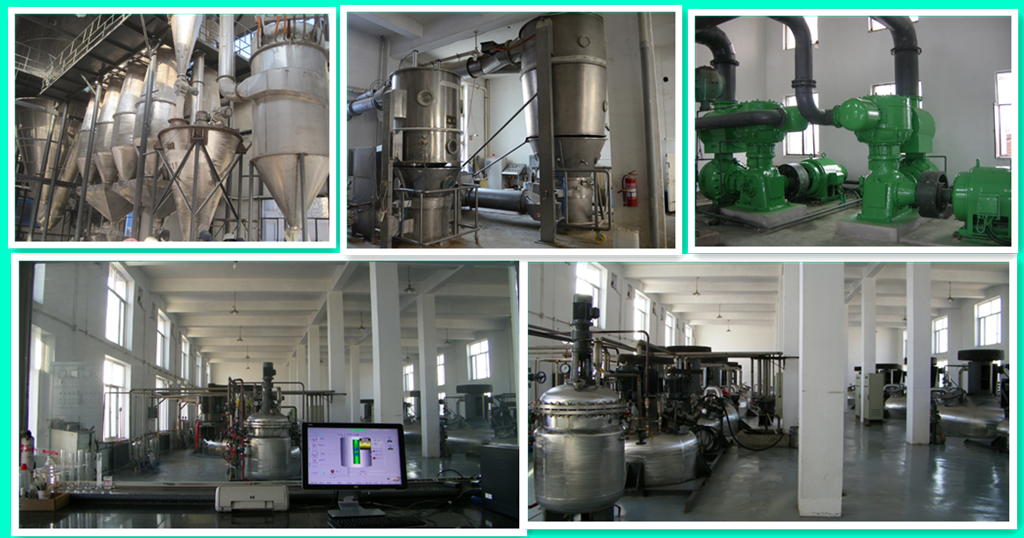
Thank you for your browsing, as a professional manufacturer of enzyme preparations and micro-ecological preparations, we are also very willing to help you . If you want to know the targeted solution, please leave a message in the message window below, we will assign a professional product consultant to contact you.

